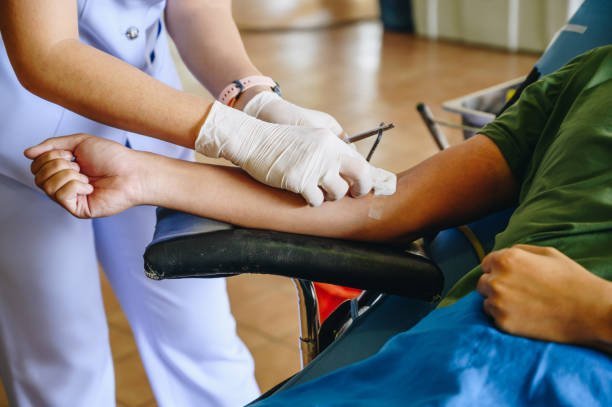We all know donating blood saves lives, but do you know what happens to your blood after you’ve donated? While donating blood is a fairly simple process, once it’s collected, your donation will go through many steps before it reaches a patient in need.
Where does your blood go once it’s donated?
Wondering where your blood goes after you’ve donated and how it lands in the hands of those that need it the most? Cedars-Sinai breaks down how their Blood Donor Services team tests and processes donations.
First, the whole blood (what’s taken out of your arm) is spun to separate out its components—red blood cells and plasma.
Cedars-Sinai’s blood donation center collects platelets for transfusion through a different method called apheresis, a process of simultaneously removing platelets from a donor’s blood and returning the blood to the donor.
After the blood is separated, more than a dozen tests are performed to ensure it’s safe to use.
Once all the testing is complete, the components are stored until patients need them. Your blood is now considered 100% safe and will go on to make a difference in someone else’s life and for that, you should be proud.
“Community blood donors serve as a lifeline for our patients.”
Ready to make a blood donation?
We recognize that you’ve put yourself on the line to donate blood, so we want to make sure it doesn’t take a toll on your body. For most people, the reduction in iron levels caused by donating blood will have no effect on their health.
However, for young women and frequent donors of both genders, donating blood may worsen iron deficiency and/or anemia (low red blood cells). Luckily, you can combat this by eating a well-balanced diet with iron-rich foods.
Although iron-rich foods are a necessity, we highly recommend that you consult with your doctor before taking extra iron in the form of vitamins or supplements.
Too much iron can be harmful to your health. Your doctor can point you in the right direction of how much iron you need based on your age, gender, and how often you donate blood.
Thinking about making a blood donation, but don’t know where to begin? We’ve got covered with a few things you can do before your appointment to ensure you receive the best outcome possible.
Here are some tips on how to prepare:
- Maintain healthy iron levels by eating iron-rich foods [PDF] such as red meat, fish, poultry, beans, spinach, iron-fortified cereals, and raisins.
- Get a good night’s sleep.
- Avoid excessive alcohol consumption before your donation.
- Eat normally and drink extra fluids before and after your donation.
- If you are donating platelets, remember that you cannot take aspirin for 2 days prior to the donation.
- Bring your driver’s license or another form of photo ID.
To find a blood drive location near you, visit American Red Cross. (Source: BlackDoctor.org)

